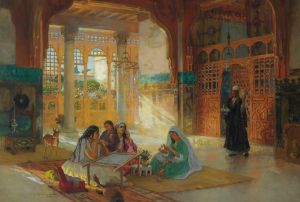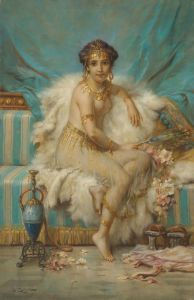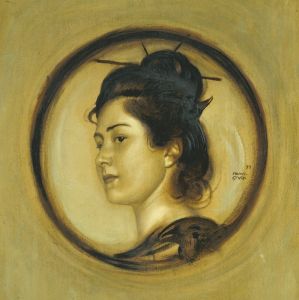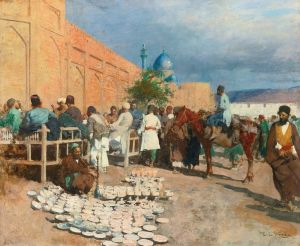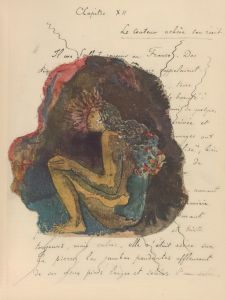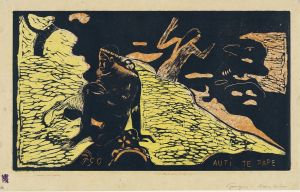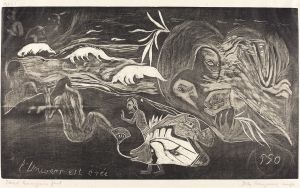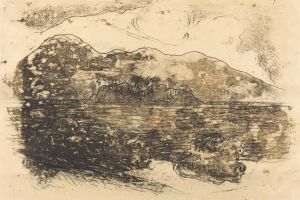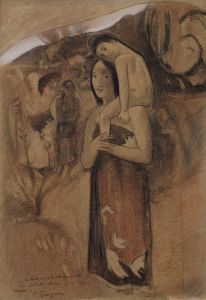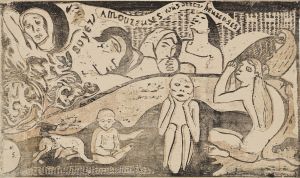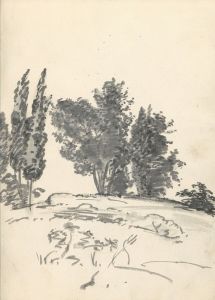
Les Champs au bord de la mer
A hand-painted replica of Paul Gauguin’s masterpiece Les Champs au bord de la mer, meticulously crafted by professional artists to capture the true essence of the original. Each piece is created with museum-quality canvas and rare mineral pigments, carefully painted by experienced artists with delicate brushstrokes and rich, layered colors to perfectly recreate the texture of the original artwork. Unlike machine-printed reproductions, this hand-painted version brings the painting to life, infused with the artist’s emotions and skill in every stroke. Whether for personal collection or home decoration, it instantly elevates the artistic atmosphere of any space.
Paul Gauguin's "Les Champs au bord de la mer" is a painting that exemplifies the artist's innovative approach to color and form, which played a significant role in the development of modern art. Gauguin, a leading figure in the Post-Impressionist movement, is known for his bold use of color and synthetist style, which sought to synthesize subject and idea with form and color.
"Les Champs au bord de la mer," translated as "Fields by the Sea," was painted during a period when Gauguin was exploring new artistic territories and philosophies. This painting is believed to have been created during his stay in Brittany, France, a region that greatly influenced his work due to its distinct landscape and cultural heritage. Brittany's rugged coastline, traditional Breton culture, and rural scenery provided Gauguin with a wealth of inspiration, leading him to produce some of his most notable works during this time.
In "Les Champs au bord de la mer," Gauguin employs a vivid palette and simplified forms, characteristics that are hallmarks of his style. The painting depicts a coastal landscape, capturing the essence of the natural environment with broad, flat areas of color and strong outlines. This approach reflects Gauguin's departure from the Impressionist focus on capturing light and momentary effects, instead emphasizing the emotional and symbolic potential of color and composition.
Gauguin's use of color in this painting is particularly noteworthy. He often used non-naturalistic colors to convey mood and meaning, a technique that would later influence artists such as Henri Matisse and the Fauves. In "Les Champs au bord de la mer," the colors are vibrant and expressive, contributing to the overall atmosphere of the scene. The painting's composition is carefully structured, with the fields and sea forming a harmonious balance that guides the viewer's eye across the canvas.
The painting also reflects Gauguin's interest in the idea of "primitive" art, which he believed was more authentic and closer to the spiritual essence of humanity. This interest led him to seek inspiration from various cultures and to incorporate elements of their art into his own work. While "Les Champs au bord de la mer" does not directly depict any specific cultural motifs, it embodies Gauguin's broader quest to transcend the conventional boundaries of Western art.
Gauguin's time in Brittany was a formative period in his career, during which he developed many of the techniques and ideas that would define his later work. "Les Champs au bord de la mer" is a testament to his evolving style and his commitment to exploring new artistic possibilities. The painting remains an important example of Gauguin's contribution to the Post-Impressionist movement and his influence on subsequent generations of artists.
Today, "Les Champs au bord de la mer" is appreciated not only for its aesthetic qualities but also for its historical significance. It represents a pivotal moment in Gauguin's artistic journey and offers insight into the broader trends and innovations that were shaping the art world at the turn of the 20th century. As such, it continues to be studied and admired by art historians and enthusiasts alike.





